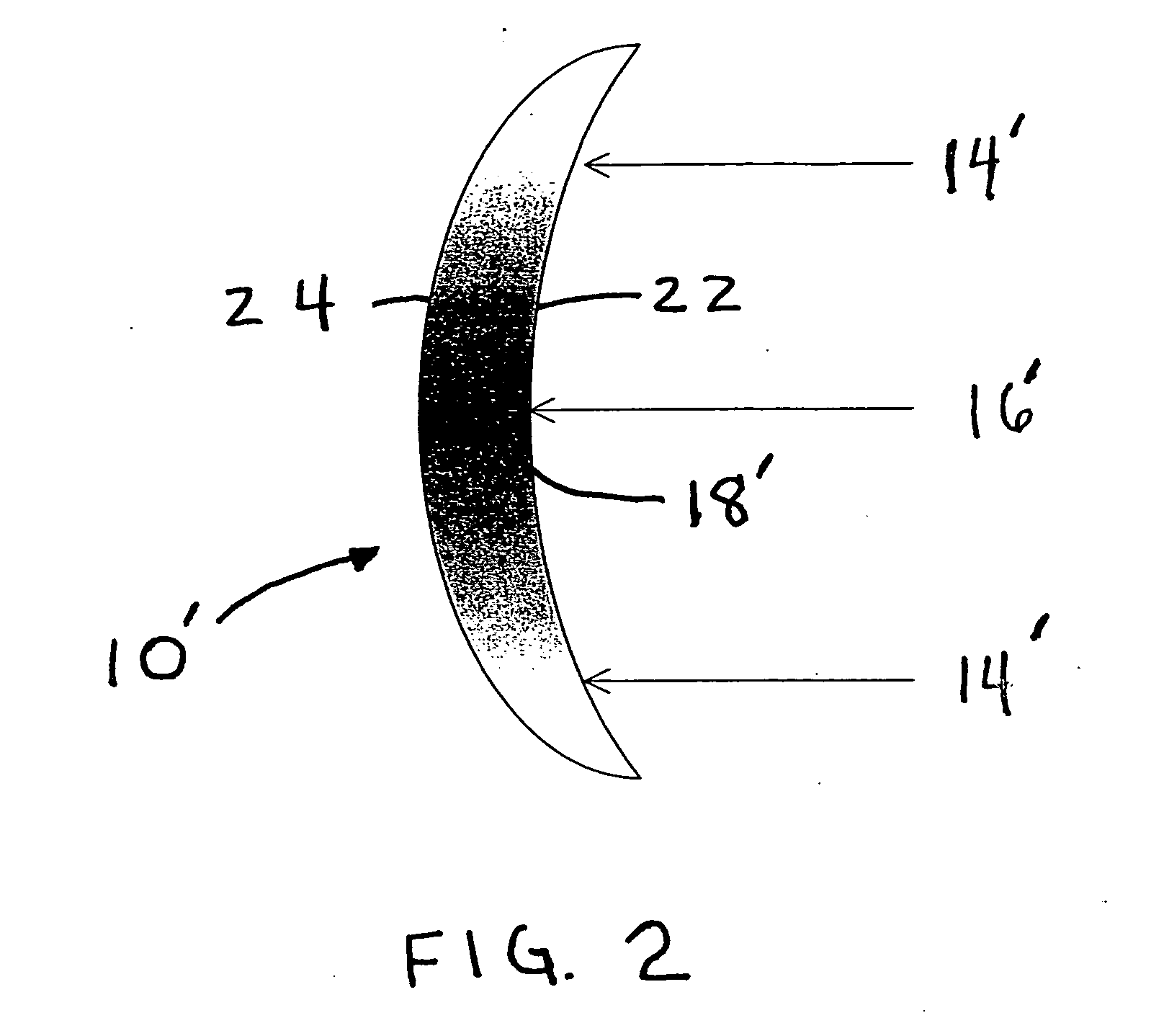Infinite refractive index gradient (IRIG) polymers for ocular implant and contact lens applications
a technology of iols and gradients, applied in the field of ophthalmic lenses, can solve the problems of less popularization of rigid iols in the market, less light loss, and less visual acuity
- Summary
- Abstract
- Description
- Claims
- Application Information
AI Technical Summary
Benefits of technology
Problems solved by technology
Method used
Image
Examples
Embodiment Construction
Base Materials
[0025] Suitable lens-forming monomers for use in the present invention include carbazole and / or naphthyl moiety, carbazole, naphthalene, or a naphthyl group such as vinyl carbazole, vinyl naphthalene, lauryl methacrylate, stearyl methacrylate, methyl methacrylate, 2-hydroxyethyl acrylate, 2-hydroxyethyl methacrylate, 3-hydroxypropyl acrylate, 3-hydroxypropyl methacrylate, n-vinyl pyrolidone, styrene, eugenol (4-hydroxyvinylbenzene), .alpha.-methylstyrene. In addition, for high-refractive index foldable lens applications, suitable monomers include, but are not limited to: 2-ethylphenoxy methacrylate, 2-ethylphenoxy acrylate, 2-ethylthiophenyl methacrylate, 2-ethylthiophenylacrylate, 2-ethylaminophenyl methacrylate, phenyl methacrylate, benzyl methacrylate, 2-phenylethyl methacrylate, 3-phenylpropyl methacrylate, 4-phenylbutyl methacrylate, 4-methylphenyl methacrylate, 4-methylbenzyl methacrylate, 2-2-methylphenylethyl methacrylate, 2-3-methylphenylethyl methacrylate, ...
PUM
| Property | Measurement | Unit |
|---|---|---|
| length | aaaaa | aaaaa |
| length | aaaaa | aaaaa |
| RI | aaaaa | aaaaa |
Abstract
Description
Claims
Application Information
 Login to View More
Login to View More - R&D
- Intellectual Property
- Life Sciences
- Materials
- Tech Scout
- Unparalleled Data Quality
- Higher Quality Content
- 60% Fewer Hallucinations
Browse by: Latest US Patents, China's latest patents, Technical Efficacy Thesaurus, Application Domain, Technology Topic, Popular Technical Reports.
© 2025 PatSnap. All rights reserved.Legal|Privacy policy|Modern Slavery Act Transparency Statement|Sitemap|About US| Contact US: help@patsnap.com



